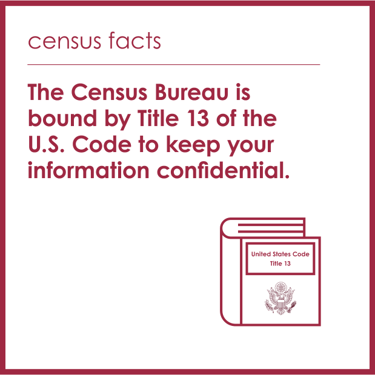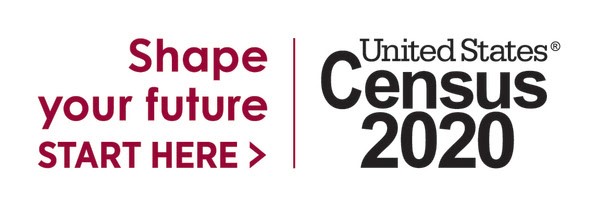Kingston Counts!
2020 United States Census
CLICK HERE TO TAKE THE 2020 CENSUS
If you live in the United States, you are required by law to complete the 2020 Census.
U.S. CENSUS 101
In mid-March, households will begin receiving official Census Bureau mail with detailed information on how to respond to the 2020 Census. By April 1, 2020, every home will receive an invitation to participate in the 2020 Census. You will have three options for responding:
The 2020 Census will provide a snapshot of our nation—who we are, where we live, and so much more. The results of this once-a-decade count determine the number of seats each state has in the House of Representatives. They are also used to draw congressional and state legislative districts.
Over the next decade, lawmakers, business owners, and many others will use 2020 Census data to make critical decisions. The results will show where communities need new schools, new clinics, new roads, and more services for families, older adults, and children.
The results will also inform how hundreds of billions of dollars in federal funding are allocated to more than 100 programs, including Medicaid, Head Start, block grants for community mental health services, and the Supplemental Nutrition Assistance Program, also known as SNAP.
Timeline
- March 12 - 20, 2020: Households will begin receiving official Census Bureau mail with detailed information on how to respond to the 2020 Census online, by phone, or by mail.
- March 30 - April 1: The Census Bureau will count people who are experiencing homelessness over these three days. As part of this process, the Census Bureau counts people in shelters, at soup kitchens and mobile food vans, on the streets, and at non-sheltered, outdoor locations such as tent encampments.
- April 1: Census Day is observed nationwide. Once the invitation arrives, you should respond for your home in one of three ways: online, by phone, or by mail. When you respond to the census, you'll tell the Census Bureau where you live as of April 1, 2020.
- April: Census takers will begin visiting college students who live on campus, people living in senior centers, and others who live among large groups of people. Census takers will also begin following up with households that have not yet responded in areas that include off-campus housing, where residents are not counted in groups.
- May - July: Census takers will begin visiting homes that haven't responded to the 2020 Census to help make sure everyone is counted.
- December: The Census Bureau will deliver apportionment counts to the President and Congress as required by law.
2021
- March 31: By this date, the Census Bureau will send redistricting counts to states. This information is used to redraw legislative districts based on population changes.
Questions Asked
The 2020 Census is easy. You will answer a simple questionnaire about yourself and everyone who is living with you on April 1, 2020.
The U.S. Census Bureau website shows the questions you’ll be asked, provides tips for responding to each one, and information on how the Census Bureau will use your answers.
Explore the Census Form and questions.
The Census Will Never Ask Certain Questions
During the 2020 Census, the Census Bureau will never ask you for: your Social Security number; money or donations; anything on behalf of a political party; your bank or credit card account numbers. Additionally, there is no citizenship question on the 2020 Census.
If someone claiming to be from the Census Bureau contacts you via email or phone and asks you for one of these things, it's a scam, and you should not cooperate. For more information, visit Avoiding Fraud and Scams on the Census Bureau website.
Confidentiality and the 2020 Census

Who To Count
The 2020 Census will count everyone living in the United States and five U.S. territories.
If you are filling out the census for your home, you should count everyone who is living there as of April 1, 2020. This includes any friends or family members who are living and sleeping there most of the time. If someone is staying in your home on April 1, and has no usual home elsewhere, you should count them in your response to the 2020 Census. Please also be sure to count roommates, young children, newborns and anyone who is renting a space in your home. These people are often missed in the census. This means they can miss out on resources for themselves and their communities over the next 10 years.
For special circumstances, such as babies born on Census Day, people who move on Census Day, foreign citizens in the United States, or people in prisons, among other situations, please visit the Census Bureau website for more information.
Counting Young People Fact Sheet
Multi-Generational Home Fact Sheet
Counting People in Group Living Arrangements
If you are living or staying in a group living arrangement, also known as group quarters, on April 1, 2020, the Census Bureau has a special process for counting you.
Group quarters are places where people live or stay in a group living arrangement. These places are owned or managed by an entity or organization that provides residents with housing and/or services.
Some examples of group quarters include:
- College/university student housing (i.e., dorms, residence halls, etc.)
- Residential treatment centers
- Skilled nursing facilities
- Group homes
- Military barracks
- Correctional facilities
- Maritime and military vessels
If you live or stay in group quarters, the Census Bureau will identify a group quarters administrator at your location to ensure that you are counted in the 2020 Census.
For more information on counting people in group living arrangements and people who may be experiencing homelessness, please visit the Census Bureau website.
